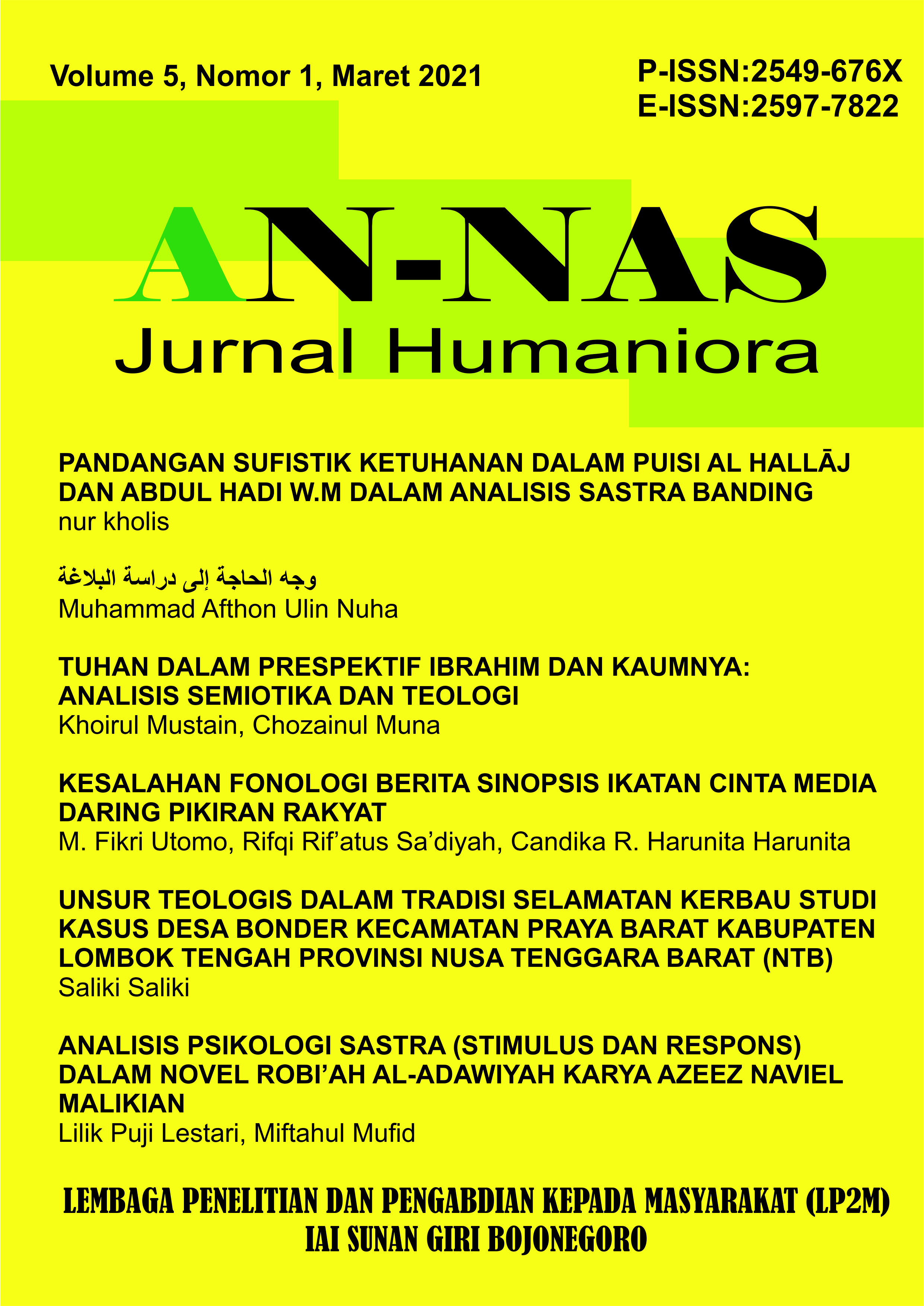TUHAN DALAM PRESPEKTIF IBRAHIM DAN KAUMNYA:
ANALISIS SEMIOTIKA DAN TEOLOGI
DOI:
https://doi.org/10.36840/annas.v5i1.390Keywords:
semiotics of Pierce, Theology of divinity Abu Hasan al-Asy'ari, Prophet Ibrahim, the people of BabylonAbstract
“This article aims to find out the concept of divinity in the story of Prophet Ibrahim and his people which is written in the Qur'an surah Al-Anbiya '. The research was conducted using Charles Sanders Pierce's semiotic approach and the theory of divinity according to Abu al-Hasan al-Asy'ari. Pierce in his theory introduced the triadic concept to find the meaning of a sign, namely the representament, object, and interpretant (rheme, dicisign, argument).As for the theory of divinity according to Abu al-Hasan al-Asy'ari the properties that must be in God are twenty attributes. Which is divided into four parts including an-nafsiyyatu, as-salbiyyatu, al-ma'Äni, and al-ma'nawiyyatu. Both approaches are used to determine the meaning of the signs contained in the verse from the semiotic perspective of Charles Sanders Pierce. As well as the concept of divinity in it when viewed from the theory of divinity according to the perspective of Abu al-Hasan al-Asy'ari. The results of this study the authors found the concept of divinity and its negation contained in the story of Prophet Ibrahim and his people according to the perspective of Abu al-Hasan al-Asy'ari. Meanwhile, the meaning of signs in Pierce's semiotic theory, Prophet Ibrahim is a character who represents the truth of God's attributes because Prophet Abraham always interprets phenomena that occur using his logic which is also corroborated by God's revelations conveyed through the angel Gabriel. As for the Babylonians, they are figures who represent the negation of the truth of God's attributes because they interpret the phenomena that occur without logic and are more following the traditions of their ancestors.
Downloads
Downloads
Published
Issue
Section
License
Copyright (c) 2021 An-Nas

This work is licensed under a Creative Commons Attribution 4.0 International License.






